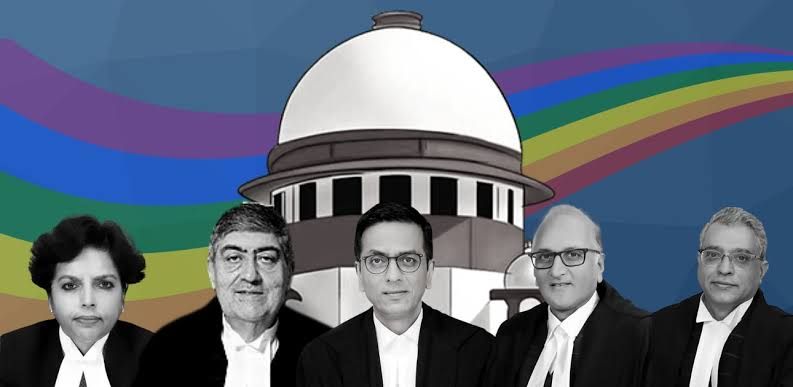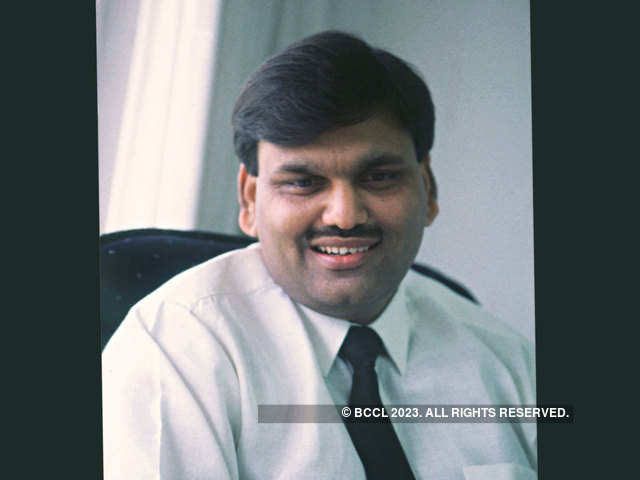Author: Rupashree Meher, a student at Amity University Chhattisgarh, Raipur
Abstract
Marriage can be understood as the union of two individuals and their families in order to make a union and so establish marriage. But the right to marry is not specifically acknowledged as a fundamental right in the Indian Constitution. That does not, however, rule out the prospect of it becoming into a right protected by the constitution. The topic of same-sex marriage is conflicting and controversial in many countries around the world, including India. An examination of ancient Indian literature and scriptures reveals a more progressive society than that of the post-independence age, despite divergent views. India experienced a similar uprising with the arrival of the twenty-first century, in reaction to the global struggle against discrimination and subjection.
Over the last decade, the Supreme Court has expanded its terminology on privacy, autonomy, and constitutional morality. From the Suresh Kumar Koushal v. Naz Foundation decision to the thoughtful Navtej Johar case, which revoked section 377 of the Indian Penal Code, 1860 and legalized homosexuality, and the Puttaswamy decision, which established a solid framework for the community to advance its rights, much progress has been made. Despite the verdicts, India currently lacks a legal framework that recognizes personal relationships between people of the same sex. Marriage laws in India are governed by the personal laws of Hindus, Muslims, and Christians, as well as the secular Special Marriage Act (SMA), all of which recognize exclusively heterosexual partnerships between men and women. However, the decision left many matters unaddressed, including the acceptance and protection of same-sex partnerships, civil unions, and marriage. As a result, members of the LGBTQ community are denied the governmental advantages that married couples receive, as well as social and legal recognition for their union.
In the present case of, Supriyo Chakraborty v. Union of India was primarily concerned with the refusal of marriage registration to a same-sex couple. While the court’s restricted interpretation of the freedom to marry impacts all groups, it has a special impact on the LGBTQ+ community. Prior to this, cases such as Navtej Singh Johar provided a little hope for the acceptance of same-sex marriage. However, the current judgment has hampered the struggle for marital equality in India. The denial of a fundamental right to marry presents considerable problems for same-sex couples. They are denied access to legal benefits and protections associated with marriage, including as adoption, inheritance, joint ownership of property, and hospital visitation rights.
Details of the case
The following are some of the key details of the case mentioned in this article:
- Case Name: Supriyo a.k.a Supriya Chakraborty & Anr. V. Union of India
- Case No.: Writ Petition (Civil) No. 1011/2022
- Parties to the case:
- Petitioner(s) :- Supriyo Chakraborty, Abhay Dang, Parth Phiroze Mehrotra, Uday Raj Anand
- Respondent:- Union of India
- Court: Supreme court of India
- Five-Judge Bench: CJI D.Y. Chandrachud , J. S.K. Kaul, J. Rabindra Bhat, J. Hima Kohli, J. P.S. Narasimha
Background of the case
- In November 2022, the petitioners, Supriyo aka Supriya Chakraborty and Abhay Dang on behalf of twenty petitions filed by same sex couples, transgender individuals, and LGBTQIA+ activists, collectively challenged the provisions of Special Marriage Act 1954, Hindu Marriage Act 1955 and the Foreign Marriage Act 1969.
- Specifically, they contended that these legislation, in their current form, do not recognize homosexual marriages, thus amounted to discrimination and was violative of the LGBTQIA+ Community’s fundamental rights under the constitution.
- The petitioners have claimed broader constitutional entitlements arising out of the right to life, personal liberty, and dignity, which is embodied in the provisions of the Constitution, including its Preamble, and Articles 14, 19, and 21.
- The petitioners approached the court in the exercise of its judicial review jurisdiction, seeking enforcement of their own fundamental rights as well as the interest on behalf of lakhs of other LGBTQIA+ persons in India.
- In the legendary rulling of Navtej Singh Johar v. Union of India, the Supreme Court decriminalised homosexuality by striking down Section 377 of the Indian Penal Code, 1860. The Court made it clear that engaging in consenting, private same-sex acts with other adults is a crucial component of one’s right to privacy. The Court did not, however, consider how these rights might be applied in public domains, such as marriage rights.
Issues involved in the case
- Do people who identify as LGBTQIA+ have the right to marry?
- Can the SC issue a declaration stating that LGBTQIA+ people have the right to marry?
- Does the Special Marriage Act, 1954’s exclusion of LGBTQIA+ marriages are considered as discrimination under Article 14?
Contentions of the Petitioners
- The Indian Constitution (Articles 14, 15, 19, and 21) gives the right to marriage to all people, regardless of their sexual orientation. Marriage equality should apply to all LGBTQIA+ identities, not just gay and lesbian couples.
- Excluding same-sex couples because of their sexual orientation is discriminatory. There is no logical reason to refuse them marriage.
- The Special Marriage Act (SMA) should be amended to allow marriages between any two spouses, eliminating the current “man and woman” requirement.
- Civil unions are not sufficient. LGBTQIA+ couples deserve full social and legal recognition for marriage.
- The government has no reason to limit marriage to heterosexual couples.
- Adoption regulations that restrict same-sex couples from adopting should be struck down.
- Adoption rules that prevent same-sex couples from adopting should be repealed.
Contentions of the Respondents
- The judiciary is not the competent body to legislate on the issue. Parliament is the sole appropriate platform for granting LGBTQIA+ people a new ‘socio-legal status of marriage’.
- They contended that the conventional understanding of marriage was as a partnership between a biological man and woman, with the main goals being procreation and recreation.
- The Special Marriage Act is a piece of legislation designed specifically for heterosexuals, and declaring it null and void would bring back India to the pre-independence era, when two people of different castes, faiths, and beliefs could not marry each other. The point of progressive legislation would be lost.
- They recommended that broader consultations be conducted instead of using the legal system to make such a significant change. The legislature is best qualified to handle such delicate matters since it is a true reflection of the people’s will.
Decision of the Court
On October 17, 2023, the constitution bench (Chief Justice D.Y. Chandrachud, Justice Sanjay Kishan Kaul, Justice Ravindra Bhat, Justice P.S. Narasimha, and Justice Hima Kohli), of the Hon’ble Supreme Court gave a 3:2 split ruling in Supriyo v. Union of India. The Supreme Court declined to recognize non-heterosexual marriages under existing legislation. The court ruled that the right to marry is not a fundamental right and is not guaranteed by the constitution. While the court did not endorse equal marriage, it did acknowledge the rights of non-heterosexual couples. Furthermore, it determined that the subject is outside the court’s jurisdiction and that the Parliament is the appropriate forum for it due to the enormous number of legislations and provisions involved.l
Minority Opinion
Chief Justice D.Y. Chandrachud and Justice Sanjay Kishan Kaul, both the judges concurred while stating that queer partnerships “are to be recognized as a union to provide partnership and love”, found that the Special Marriage Act violated Article 14 by being discriminatory. Justice S.K. Kaul, however, agreed with the CJI D.Y. Chandrachud and argued that because the Special Marriage Act’s provisions fall under the jurisdiction of Parliament and the Legislature, the Court is unable to read down or abolish them on the grounds of “institutional limitations”. The CJI recorded the Solicitor General’s testimony, testifying for the Union, that the Union Government will form a committee to decide the rights and entitlements of people in queer relationships. The CJI ruled that transgender individuals in heterosexual relationships have the right to marry under current laws, including personal laws. Unmarried couples, including LGBT couples, can jointly adopt children. In that connection, the CJI determined that Regulation 5(3) of the CARA Regulations, which prevented unmarried and queer couples from adopting, violated Article 15 of the Constitution.
Majority Opinion
Justice S Ravindra Bhat disagreed with the CJI’s decision, stating that the right to civil union could only be obtained by legislation. However, he also concluded that the Union should form a High Powered Committee to investigate the rights and benefits of LGBT couples. He distinguished the current case from other decisions involving LGBT rights, stating that in the past, the Court intervened to protect queer people from assault or criminalization on the basis of the state’s duty to protect citizens’ rights. Justice Bhat went on to say that the Court could not build a legal framework for LGBT couples; it was the responsibility of the government, as there were various policy considerations to be made. Justice Bhat agreed with the CJI on the right of transgender people in heterosexual partnerships to marry under current laws. However, he differed with the CJI on the right of queer couples to adopt, arguing that Regulation 5(3) of the CARA regulation is not unconstitutional.
Justice Hima Kohli and Justice PS Narasimha agreed with Justice Bhat that marriage is not an unqualified right, but rather a statutory or customary right. He also ruled that it would be unconstitutional to recognize a right to civil union that mirrored marriage. On the issue of the CARA laws and LGBT couples’ right to adopt, he concurred with Justice Bhat and stated that the CARA restrictions could not be declared illegal. Justice Narasimha further noted that a reassessment of legislation systems that exclude homosexual couples from pension, PF, gratuity, insurance, and other benefits was necessary.
Conclusion
The Supreme Court’s decision on same-sex marriage reflects the legal and societal complexities of the situation. Legally, it struck a balance between constitutional ideals, stating that marriage is not a basic right and should be established by parliament rather than the courts. The court appropriately recognized the dignity of same-sex couples while denouncing harassment and discrimination. The ruling recognizes LGBTQIA+ people’s historical presence in Indian culture, supporting a more inclusive society alongside anti-discrimination laws. While it does not fully meet the LGBTQIA+ community’s objectives, it is an important step toward equal rights. It promotes continuing dialogue and calls for improvements in both the law and society. It demonstrates how the legal system evolves alongside society to promote justice and equity for all. However, it is important to strike a balance between the court’s duty and government-enacted legislation.





